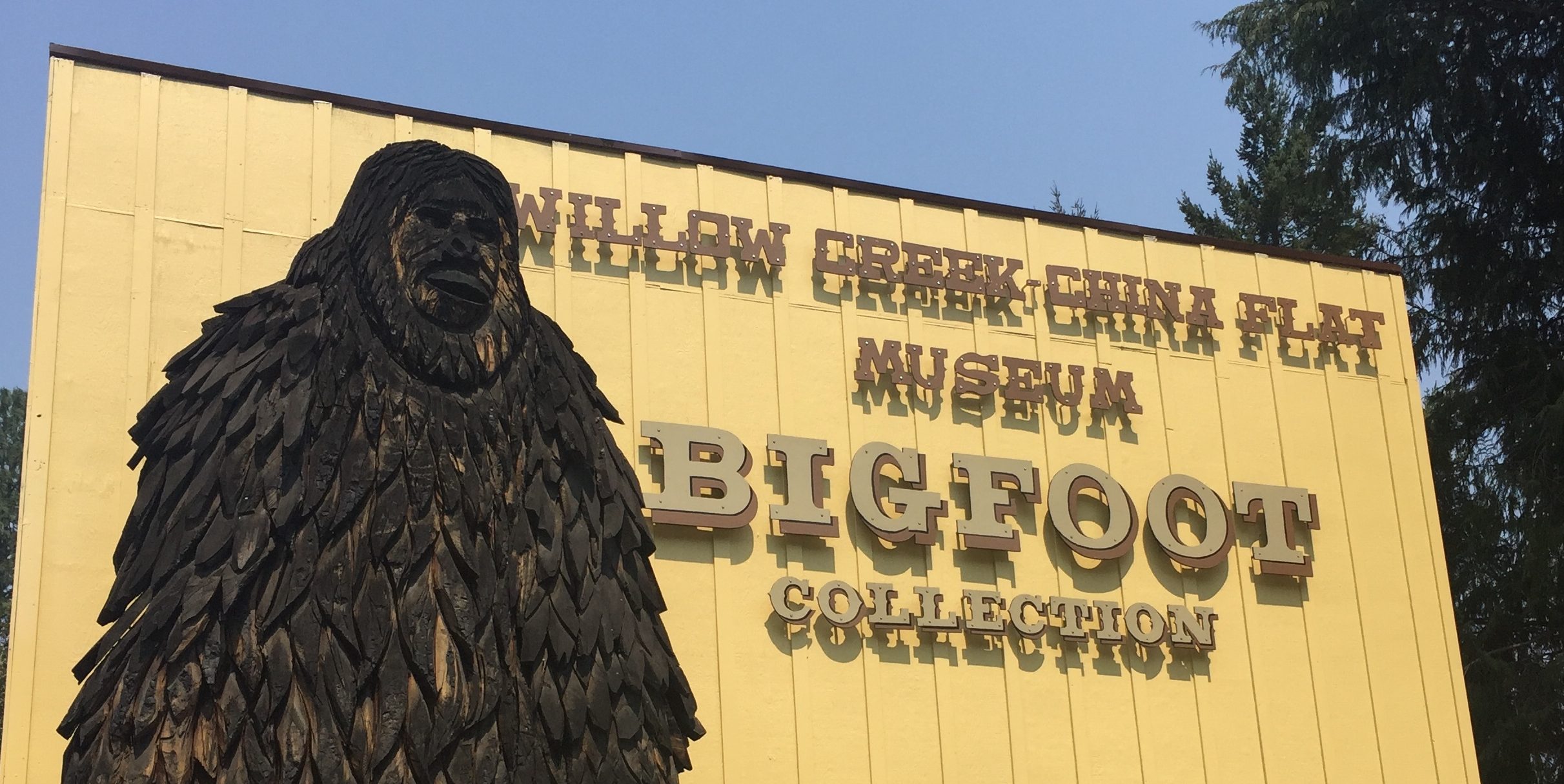This summer I made a trip to Humboldt County, Calif., a beautiful area near the Oregon border with thousands of acres of redwood forest. Boyhood memories beckoned me to the small town of Willow Creek, Calif., a place thought to be the site of some of the most notorious and best documented Bigfoot sightings. There, I visited the Bigfoot museum where I saw plaster casts of huge footprints, reams of newspaper clippings and – of course –the gift shop. The visit brought back so many memories of the legend and mystery of Bigfoot ever since I saw the first Patterson-Gimlin film that captured images of the beast. So much history of Bigfoot in one small town.
As I purchased my T-shirt, stickers and books – and made a small $2 donation to keep the museum afloat – I chatted with the only docent and cashier onsite. I asked if she believed there was truth to the legend. She looked and grinned and said, “I believe there’s something to it.” I left beaming, retracing the entire twenty minutes it took to go through the exhibits. If only I could stay in town long enough to participate in the Bigfoot Days Ice Cream Social.
I drove back to my home base for the week, in Arcata, Calif., past thousands and thousands – and thousands and thousands – of redwoods, realizing I really was okay not seeing another tree for a while. Admittedly, I went to quite a few roadside “forest lovers” attractions. As I drove, my mind wandered back towards government (I really need to stop doing that) and I realized how similar Bigfoot is to government.
Stay with me for a minute here. Known by many names: sasquatch, yeti, abominable snowman and the hairy humanoid, Bigfoot is known everywhere in the world. Similarly, governments are known by many names and exist all over the world. There are thousands of accounts of Bigfoot sightings with no scientific evidence it exists – do not believe me, check out the Bigfoot Researchers Organization App. Except for police and fire services, the average Joe knows there are hints of government in their community but they cannot always put a finger on how it touches their daily lives. If you stop and think about it, Bigfoot is really a better marketer than most governments. It pops its head out for a few seconds and the world covers its story. The legend lives on by word of mouth, the press, documentaries, and now virally through social media. Just the hint that the beast exists and the wonderment of what an encounter would be like gives one goosebumps. How could government achieve goosebump-level reactions?
A foundation of the smart community movement revolves around the ideal of improving public participation and civic engagement through digital mediums. In my travels and discussions with governments, when I am not in search of Bigfoot, I hear governments asking the question of how to best engage citizens. The dialogue usually revolves around engaging citizens who need government services or using social media to communicate with the public. These tactics are unquestionably important.
But what if we chased the Bigfoot pattern? What if we asked the question, “How can we get people excited about government?” What if we could create content that gets people talking at dinner parties? Not just the small percentage that is engaged, I mean the other 99 percent. The app that answers the question, “I wonder what they are building there.” An app that not only describes the new business or residential complex but educates the citizens on what the project will bring them in the way of jobs, entertainment or affordability. Another app that not only reports an accident but also describes the number of occurrences and fatalities that happen each year at the same intersection. One that encourages people to support community policing or a new traffic signal. Perhaps it comes in the form of an app or a website. This is for you to figure out what’s important.
There are certainly some intriguing examples out there but the approach is not always consistent across programs, departments and websites. There is the Ohio Safe Room Rebate Program which presents the reasons to create safe rooms in preparation of tornados, the Northern Kentucky Opioid Map Journal which outlines the region’s problems with addiction, the County of San Bernardino, CA Retail Opportunity story map that details business prospects in the area, or the City of Long Beach, CA Tells Us About Your Noise crowdsource app that lets citizens point out noise pollution. And drawing from my recent trip to Hawaii, providing the tools for citizens when they want them, like reporting endangered turtles.
If you decide to adopt the Bigfoot pattern, there are some common takeaways we can draw from, to change your approach to building smart communities:
- Aim for the Wow Factor
- Keep people talking through your efforts
- Engage and inspire people to participate in the community
- Develop consistency in your approach
- Build a marketing strategy for the long haul so your apps are used
Author’s Note: No trees’ feelings were hurt in the writing of this article. If you think they were, check out Celebrating Great Trees to make them feel better.
Christopher Thomas is part of the GovLoop Featured Blogger program, where we feature blog posts by government voices from all across the country (and world!). To see more Featured Blogger posts, click here.





Leave a Reply
You must be logged in to post a comment.